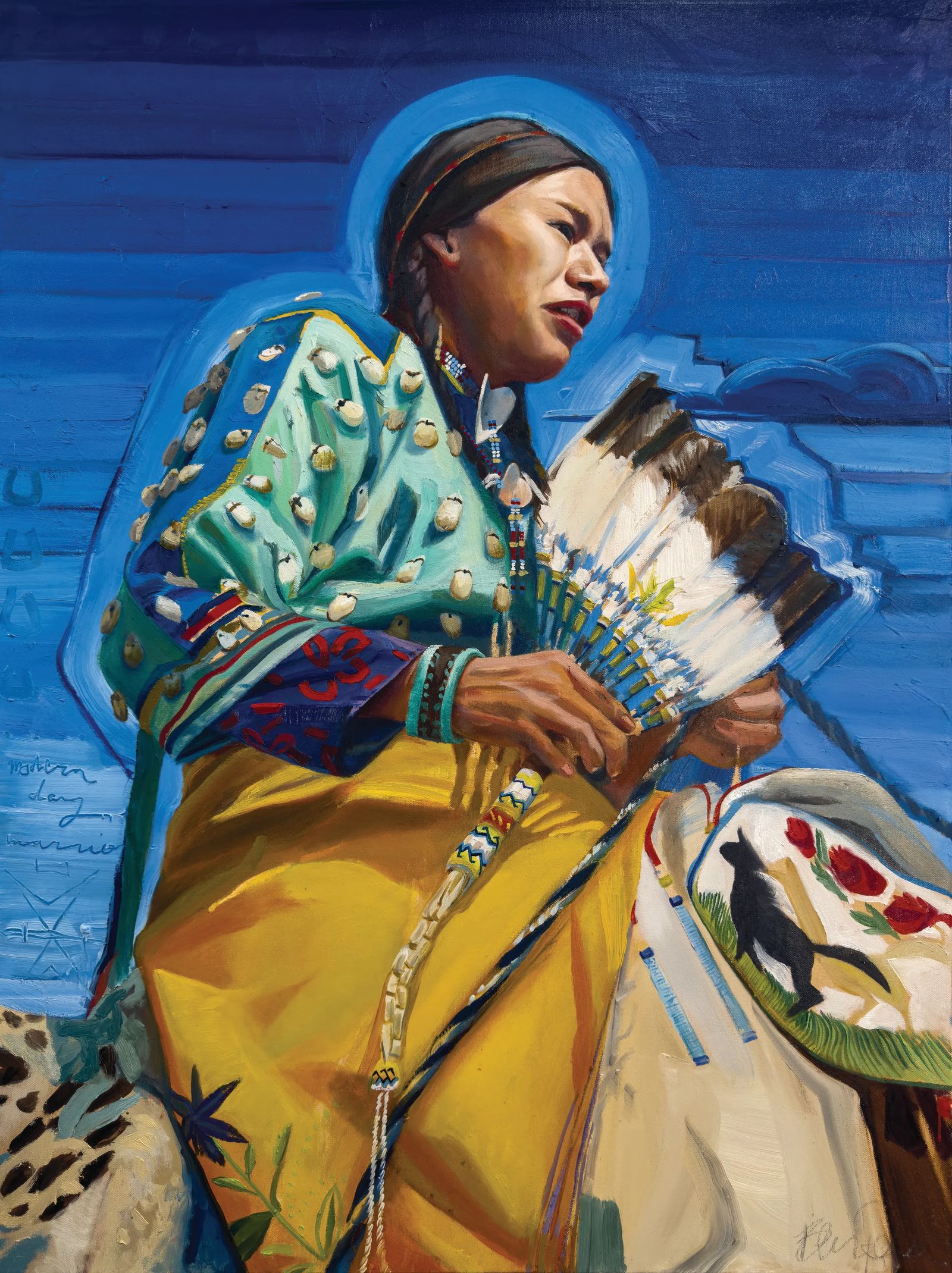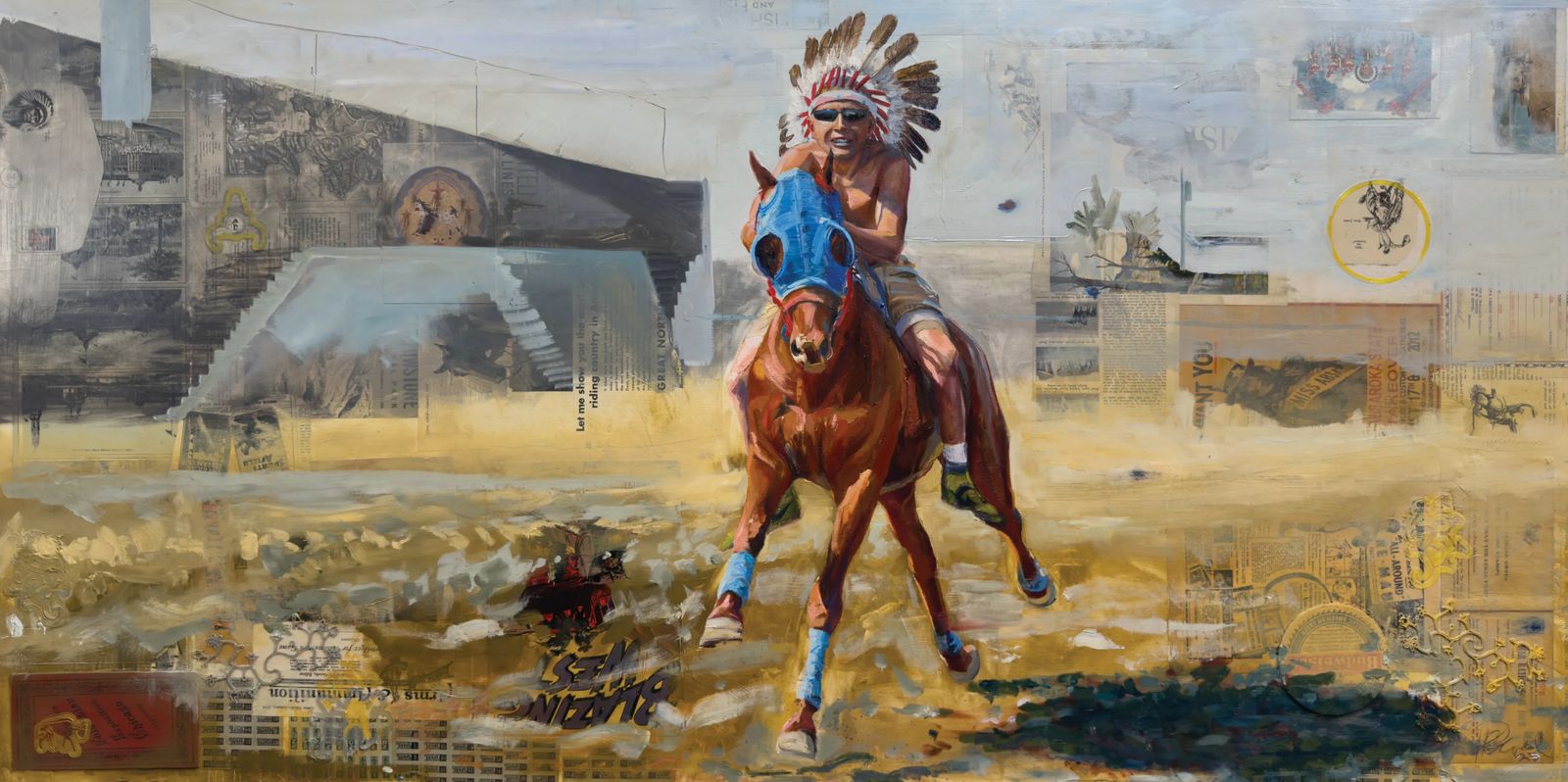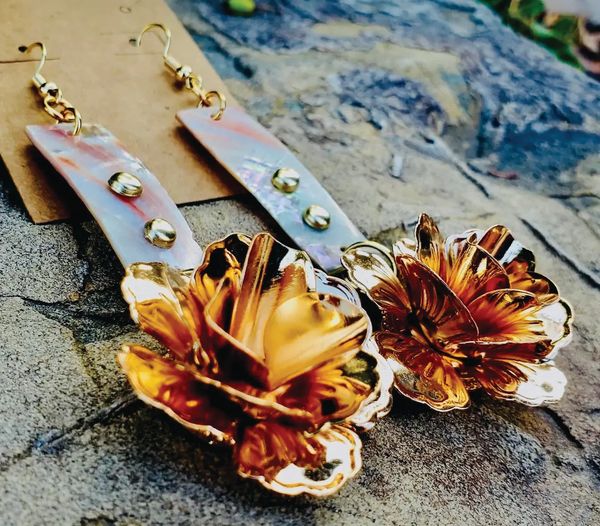
Artwork by Ben Pease - Modern-Day Warrior- iichíilehéeleen íluush(Stands Among The Horses- Kloe Real Bird) Oil on Canvas. 2025
TRIIA Igniting a New Era of Indigenous Art & Entrepreneurship
November 2025
article by Hannah Olson | photos courtesy of TRIIA
When Tally Monteau stepped into her role at TRIIA, she not only assumed a new position but also took on a mission. TRIIA began as a digital marketplace for Native artists, envisioned as an Etsy for Indigenous art to elevate creative entrepreneurs and cultural expression. Under Tally’s guidance, that vision has flourished into something even broader: a collective movement of art, advocacy, identity, and empowerment.
TRIIA, housed within the Native American Development Corporation (NADC), has become a vibrant platform that supports Indigenous artists across the Northern Plains and beyond. Through coaching, classes, artist showcases, economic development, and cultural tourism, TRIIA is not only preserving Native traditions; it’s building futures.
“We’re really here to help amplify Indigenous art,” says Monteau, a Hunkpati Dakota and Chippewa-Cree artist and educator. “There’s so much cultural appropriation in the art world. Non-Native artists make money selling images of Native culture, and that money doesn’t go back into our communities. TRIIA changes that.”

Artwork by Ben Pease Chichiìaìxxaawasuaa- They Ride in a Circle (Indian Relay, Crow Fair) 2025
MORE THAN A MARKETPLACE
Originally envisioned during the pandemic as a way to bring Indigenous artists online, TRIIA quickly expanded under Monteau’s leadership into a wide-reaching support system for Native creatives. With her background as a practicing artist and longtime art educator, Tally brought lived experience into the role. “My art was always my hustle money,” she says. “That’s how I put myself through college.”
That firsthand understanding has shaped TRIIA’s evolution. The platform now offers artists not just visibility, but tools to turn their craft into viable, sustainable businesses, helping with branding, grant writing, marketing, and product development. “Artists are micro-entrepreneurs,” she says. “A little money goes a long way when you're trying to build something from your kitchen table.”
TRIIA also hosts cultural events like Boots & Beads, participates in Indigenous art festivals, and helps artists navigate grant systems and expand their markets. Artists in the TRIIA network have launched their own stores, received state-level grants, performed at major showcases, and gained new audiences.
“In a word, TRIIA has been uplifting,” says musician Toby Falcon, who performs with his brother as the Counting Coup. “We’ve performed at TRIIA events like Big Sky Indigifest and Boots & Beads. They’ve helped us reach Indigenous communities and new fans from all walks of life.”
A COMMUNITY OF CREATIVITY
Jewelry artist Nicole Montoya, owner of Jewelry by Sixx, recalls how empowering it was to join TRIIA in its early days. “It was like a community of all these amazing Indigenous artists—men and women from many different tribes—just coming together. Sharing their knowledge, their stories, their accomplishments. Being part of that is what it’s all about.”
Montoya adds, “TRIIA gave me that confidence to go out there and really make a niche for myself in the art world community. For me, it’s about healing. It’s about growth. It’s about sharing a part of myself.” For Falcon, being part of TRIIA has also been personally transformative. “Since starting the band, I’ve felt more comfortable exploring my Indigenous identity. TRIIA has helped foster that creativity and given us a platform to embrace it.”
A CULTURE WORTH INVESTING IN
Tally is clear about the challenges facing TRIIA today. As of April 2025, the program’s federal funding was suddenly and entirely cut. “Right now,” she says candidly, “it’s just me. I used to have a team, but with the funding gone, I’m doing everything I can to keep the program alive.”
It’s a stark reminder that Native-led initiatives are often the first to face the chopping block. But the work they do is irreplaceable.
“True Indigenous art matters,” Monteau says. “It’s not just about aesthetics. It’s about survival. It’s about reclaiming space in an industry that has excluded our voices for generations.”
She dreams of building an Indigenous art center in Billings— something large-scale and lasting, like the renowned markets in the Southwest. “I call it my pipe dream,” she says with a smile. “But I believe we can get there.”
That belief runs deep in everyone connected to TRIIA. “Do it,” says Falcon, encouraging other Native artists to join. “Jump in and see what they can do for you.”
.jpeg?fit=outside&w=1320&h=1158)
HOW YOU CAN HELP
This Native American Heritage Month, TRIIA’s mission is more vital than ever. The artists it supports are preserving cultural traditions, creating new ones, and helping to shape a future where Indigenous stories are told by Indigenous people—on their own terms.
HERE’S HOW YOU CAN SUPPORT:
- Shop directly from Indigenous artists through TRIIA’s artist directory: triia.com/artists
- Donate or sponsor to keep artist coaching, workshops, and showcases going
- Hire Indigenous artists for commissions, performances, or teaching opportunities
- Attend TRIIA events like Boots & Beads or cultural showcases
- Spread the word—share their stories, social pages, and invite others to support
“TRIIA is about creativity. It’s about community. It’s about empowerment,” says Montoya. “And that’s something we all need to believe in.”
Because when you support Native artists, you’re not just buying art—you’re investing in heritage, in healing, and in a future shaped by Indigenous hands.
Originally printed in the November 2025 issue of Simply Local Magazine
Check this article out in the digital issue of Simply Local here!





